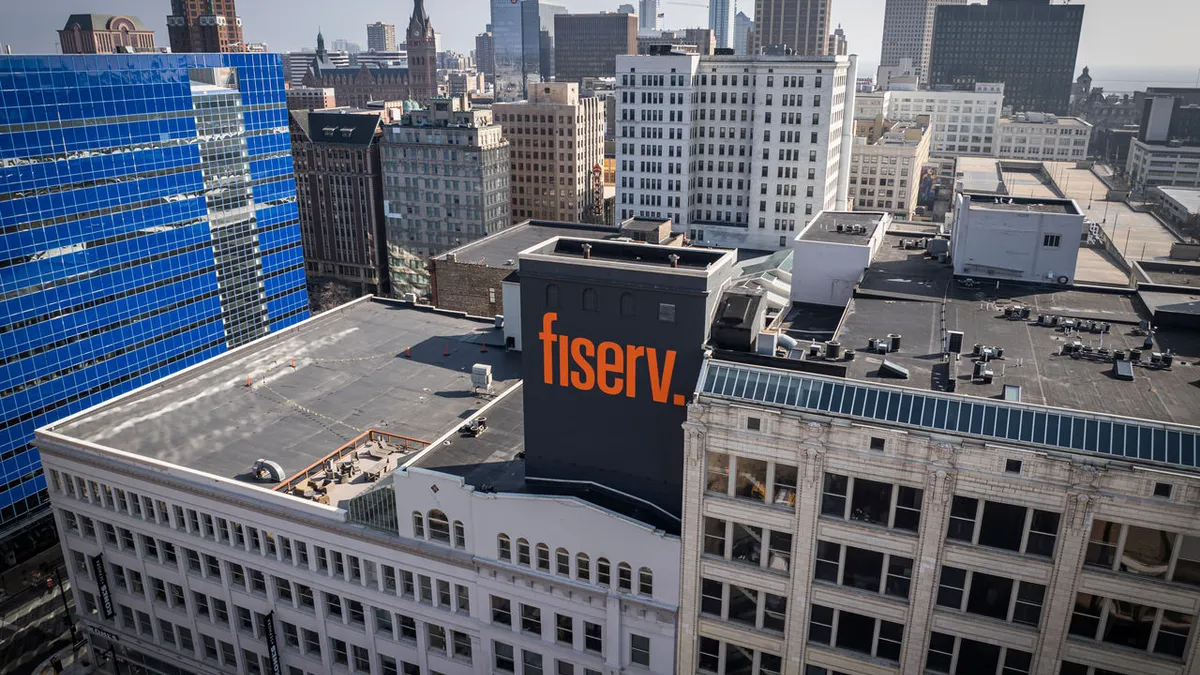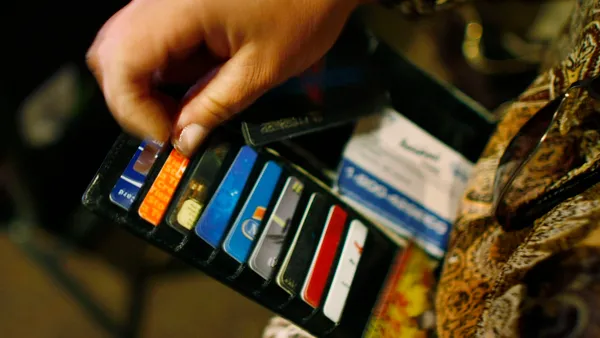Visa plans to lower the surcharge that U.S. merchants can impose on credit sales as of tomorrow, but many independent sales organizations and other processors that might be affected still haven’t seen the details.
The card giant said in a Jan. 12 Visa Business News notice that it would cut the cap to 3% on April 15 as part of a surcharge rules update. “The maximum amount for a credit card surcharge in the U.S. and U.S. territories will be lowered from 4% to 3%,” the notice obtained by Payments Dive said. “The maximum amount will now be included in Visa Rules,” it added.
While some companies in the payments industry appreciate the tacit acknowledgment by Visa that surcharges are legitimate, others have been befuddled by the company’s lack of communication about the rate policy update. The San Francisco-based card network, the largest operating in the U.S., hasn’t responded to repeated Payments Dive inquiries about the change.
In recent years, merchants have imposed surcharges to recover from consumers some of the interchange fees they pay to the bank card issuers and networks, such as Visa and Mastercard. The average interchange fee for Visa and Mastercard card transactions in 2021 was 2.22%, according to a report last year from card industry research firm the Nilson Report, but that average likely edged up last year following increases for some cards.
For its part, No. 2 rival Mastercard is maintaining its 4% surcharge cap, a spokesperson for the Purchase, New York-based company said.
Some ISOs and agents that provide merchants with the hardware and software to process credit card transactions say they’re still in the dark about Visa’s new tack on the surcharge cap. At the same time, they’re also concerned about the card network’s increasingly aggressive stance in monitoring surcharge violations.
Dustin Magaziner, who is CEO of the Raleigh, North Carolina-based ISO and processor PayBright, said he has only seen the Visa policy update through an acquirer partner, but hasn’t seen it posted publicly anywhere. He said he believes the update has only been sent to larger banks and acquirers, with many of the ISO agents and merchants who will be impacted unaware of the details.
“It’s very difficult to operate within rules that arent as clear,” he said in an interview on Wednesday. Magaziner argues that the rules should be readily available publicly on Visa's website, but they aren’t. “That’s a problem, you’re then relying on third-party intermediaries, which are the processors, to interpret your rules and then provide that interpretation downstream and that’s a dicey proposition.”
Questions about new policy persist
Stephen Aschettino, an attorney with the law firm Norton Rose Fulbright who specializes in the payments arena, agrees that Visa’s new rules are elusive. He and his ISO clients have been hunting for a public post on Visa’s new surcharge policy to no avail, he said in an interview Thursday.
Aschettino said he has a client that is a large ISO and it’s concerned about being in compliance, and educating its merchant customers about the new Visa surcharge policy. They’re also trying to figure out who will be on the hook for any fines. “I’ve told my client, you’re the ISO, so if there’s a fine that’s issued it will come to you,” he said. The ISOs can try to pass it to the merchant, but “good luck if it becomes a big number.”
Magaziner, who works with about 600 agents, questions whether the new policy will even take effect tomorrow because he believes it’s simply a notice of a possible change. From his perspective, Visa could still back-track on the idea. Aside from that central question, he has others about how Visa is defining what a surcharge is, and how it views the various types of surcharging programs that exist.
There is also confusion about whether merchants and restaurants who surcharge must post two different sets of prices, one for credit and another for cash, on their shelves and menus to comply with Visa’s rules. And to the extent merchants are required to adhere to such rules, is it the ISOs or the merchants who are responsible for enforcement?
Generally, Magaziner isn’t pleased about the idea of imposing a surcharge cap of 3%. A 3% surcharge won’t allow some processors to even cover their costs of providing services, let alone make a profit, he said.
While Magaziner and some ISOs remain in the dark, others have already adjusted their systems to the new policy. CCSalesPro CEO James Shepherd, a consultant and software provider to merchants, said that many of the larger players already reset their programs to the new 3% surcharge rate on April 1 because it didn’t make sense to do that in the middle of the month.
It would be “sloppy” for Visa to reverse course at this point, Shepherd said, because those who already altered their programs would have to reverse the changes. For those who haven’t, the fines from Visa are what will happen next, he predicted.
Visa doesn’t like the various surcharging and discounting programs and its aim is to discourage them, Shepherd said. “Their hope is that this will remove a lot of these differential pricing programs,” he said. He noted that Visa has fought merchants in court over the surcharging programs in the past.
Will there be litigation eventually?
Magaziner and others expect that there will be litigation at some point over the issue. “I do believe someone will challenge it at some point,” he said. Only a large bank, merchant or processor would challenge Visa, he predicted.
“To challenge Visa is probably millions of dollars and years of time,” Magaziner said. His firm isn’t about to take on Visa, he said. “We’re not going to be part of that,” he said. “I think it just puts a target on your back.”
With respect to Visa citing surcharge violations, Magaziner said he’s disconcerted by recent experiences in which the card behemoth is now just imposing fines, without the kind of warning conversations it usually had in the past.
The more aggressive Visa approach could be particularly harmful to those merchants who may not have ISOs, or other processors, working on their behalf, Magaziner said.
For now, Magaziner said he’s encouraging agents to recommend to merchants that any surcharge programs make both credit and cash prices visible to the consumer. Merchants should not rely on just one sign that says a cash discount is available, he said.
Correction: This article has been updated to reflect the correct name of the firm Norton Rose Fulbright.



















